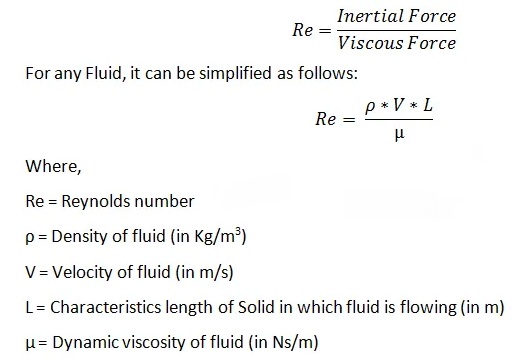The Reynolds number is a dimensionless quantity used to predict the behavior of a fluid flow and plays an important role when observing moving fluids. Flow properties such as Laminar and Turbulent are expressed as Reynolds numbers. The formula for calculating the Reynolds number for any fluid flow is:

The Reynolds number is the ratio of the inertial force to the viscous force in a fluid that is in relative internal motion due to the different velocities of the fluid. The area where these forces change the behavior is called the boundary layer, such as the boundary surface inside a pipe.
Table of Contents
Importance of Reynolds Number
Analytical and numerical analysis in engineering is difficult to understand in general quantities. It does not interpret the results and can only be used as Input and Output. Processing and clear understanding of systems and their behavior are done in dimensionless quantities. In this article, you will learn about the Reynolds number, its origin, meaning, and applications in engineering.
Derivation of Reynolds Number

Reynolds Number for Various Types of Flow
For Internal Flow:
| 0<=Re<=2000 | Laminar Flow |
| 2000<Re<=4000 | The transition from Laminar to turbulent |
| 4000<Re | Turbulent Flow |
For External Flow:
| 0<=Re<=100000 | Laminar Flow |
| 100000<Re<=500000 | The transition from Laminar to turbulent |
| 500000<Re | Turbulent Flow |
Uses of Reynolds Number
Reynolds numbers are used to predict flows and develop numerical or experimental strategies for observing the behavior of flows. It takes the velocity, pressure, and magnitude of the fluid flow as inputs. We then compute the Reynolds number to develop a strategy for solving the problem.
